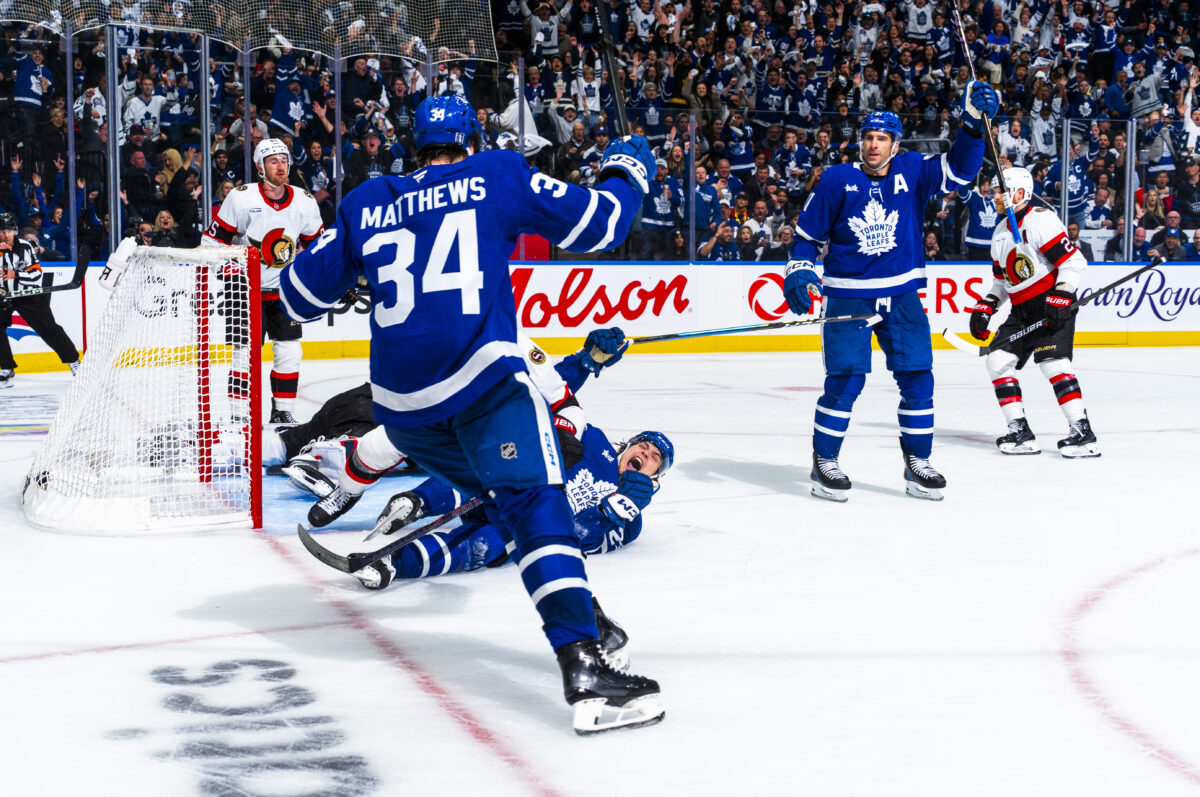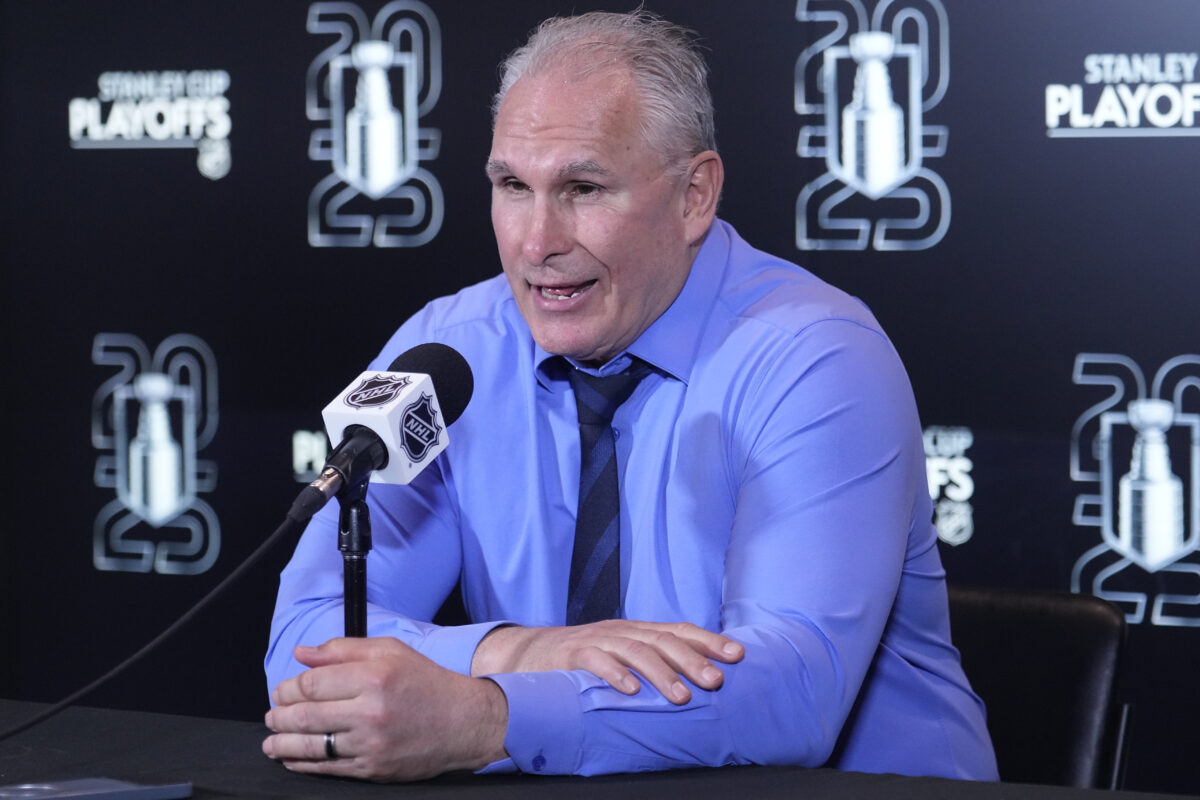It’s been one of the most dramatic offseasons in years for the Toronto Maple Leafs. The long-expected departure of Mitch Marner became a reality. Matthew Knies re-signed and is pushing toward becoming a power forward the likes of which the team hasn’t seen in many seasons. Many questions will unfold throughout training camp, and as the team begins to build its lineup for the regular-season tilts.
Similar questions will no doubt be asked. A perennial one will be if William Nylander should have some time in the middle of a line? But for the first time in a while, the Maple Leafs feel less like a collection of stars and more like a team in transition. There was no other choice when Marner walked. It was what many Blue & White fans wanted; now it’s time to face the reality.
Related: Maple Leafs Still Remain Frontrunner For Jack Roslovic
So, where does that actually leave the team? Beyond the headlines, what does the roster look like in real time under second-season head coach Craig Berube? And most importantly, what should fans brace for once the puck drops? Here are three big takeaways that might help paint a clearer picture of where things stand—and where they might be headed.
Change One: Maple Leafs Fans Should Expect a Team that’s Less Star-Driven, More System-Defined
For years, the Maple Leafs were built around the big names. With Auston Matthews, Marner, Nylander, and John Tavares, you knew who was carrying the weight. The game plan was simple: outscore the problems and hope raw talent would turn the playoff script around. Never did.
Related: 3 Maple Leafs’ Goalies Who Slipped Through the Cracks
That era’s done. Berube is pushing something different, a heavier, more north-south style that looks closer to the 2019 St. Louis Blues than the finesse-driven Maple Leafs we’ve known. Think board battles over stretch passes, cycling below the goal line instead of waiting for cross-seam looks. It’s about grinding teams down rather than dazzling them.
Matthews could be built for this. Without Marner, we don’t know yet. Knies looks like he belongs. Even Tavares, in a veteran role, can still win ugly shifts. Fans don’t give him enough credit for his courage to become a target in front of the opponent’s net. Nylander’s the wild card—he’s creative, slippery, and can change a game on one rush. However, his defensive reads might need improvement. Can he buy into the grind without losing his spark? That’s the Berube experiment in a nutshell.

The bottom line: the Maple Leafs aren’t banking on highlight reels anymore. They’re trying to become a group that can win games even when the goals aren’t coming easily.
Change Two: The Maple Leafs’ Prospects Are the Wild Card, Not the Fix
Knies is already making an impact and has moved beyond the prospect stage. At 22, he’s moving into his third full season. Easton Cowan’s motor has people excited. Blueliner Ben Danford looks like the real deal but isn’t ready for prime time – at least not yet. Still, he has raw tools that might translate in the long run. What all this means is that Maple Leafs fans need to pump the brakes—this group of prospects won’t be the cavalry coming over the hill.
Related: Auston Matthews Is Convinced That the 2025-26 Maple Leafs Are a Great Team
A Marner-sized hole doesn’t get patched by one promising winger and a teenager still adjusting to North American ice. If Toronto is leaning on its prospect pool to fill significant minutes this season, that’s a gamble. More likely, a player like Matias Maccelli might be able to jump to the pump for the team. He’s young and has had some success in the past. Can he be a difference-maker in Toronto?

The reality is that the heavy lifting will fall on the vets. Matthews, Nylander, and Tavares need to drive the offence, while players like Knies, Maccelli, and Cowan need to find their footing. Management will almost certainly need to keep the trade market in mind, especially if scoring depth dries up midseason. The kids are exciting to watch. But they’re likely not the solution yet.
The Big Maple Leafs Question: Is the Team Closer to Contending—Or Just Different?
This is the real question Maple Leafs fans want answered: Is the team closer to winning in the playoffs?
Related: Ex-Maple Leafs Frederik “Goat” Gauthier: Where is He Now?
History says not yet. The Maple Leafs have dominated regular seasons, only to flame out in postseason elimination games. That doesn’t change with a coaching hire or the new focus on the DNA buzzword. It changes when the team proves it can grind out 2–1 wins in May instead of giving up transition goals at the worst moments.

If fans are looking for an early indicator, watch their defensive numbers. If Toronto can consistently keep opponents under three goals per game, especially against top-tier teams, it’ll mean Berube’s system is sticking. If they’re winning tight games instead of blowing two-goal leads, maybe—maybe—the postseason script finally shifts. Run-and-gun tactics won’t get the job done in Toronto.
What It All Comes Down To for the Maple Leafs?
The Maple Leafs aren’t engaging in a rebuild. It isn’t even a retool. It’s more of a reshaping. The team isn’t trying to go back to what worked before, because (as fans know) it really didn’t—at least not in the playoffs. Instead, the team is trying to build something that works when the hockey gets meaner, tighter, and harder to win.
Related: Today in Hockey History: Aug. 25
That’s going to take patience. There will be ugly nights. But different doesn’t have to mean worse. In Toronto, it might finally mean better. Who knows? It could be another interesting season, but trending downhill or uphill? That’s the question.
[Note: I’d like to thank Brent Bradford (PhD) for his help co-authoring this post. His profile can be found at www.linkedin.com/in/brent-bradford-phd-3a10022a9]
